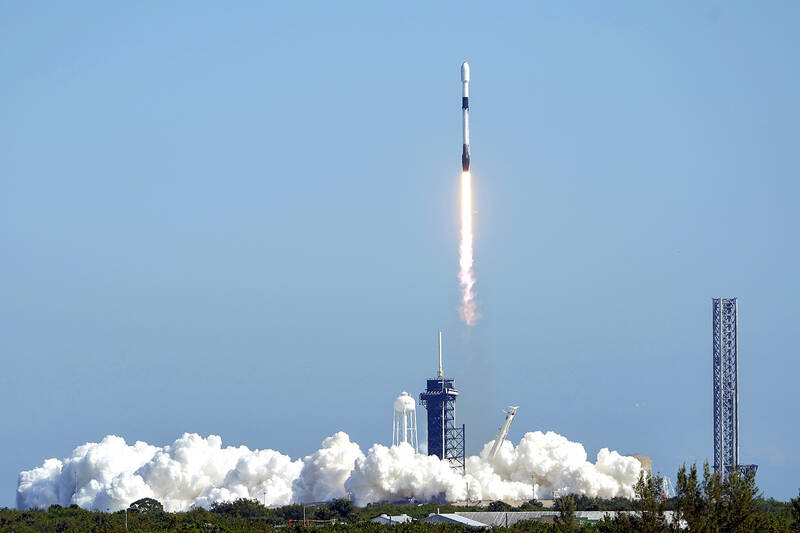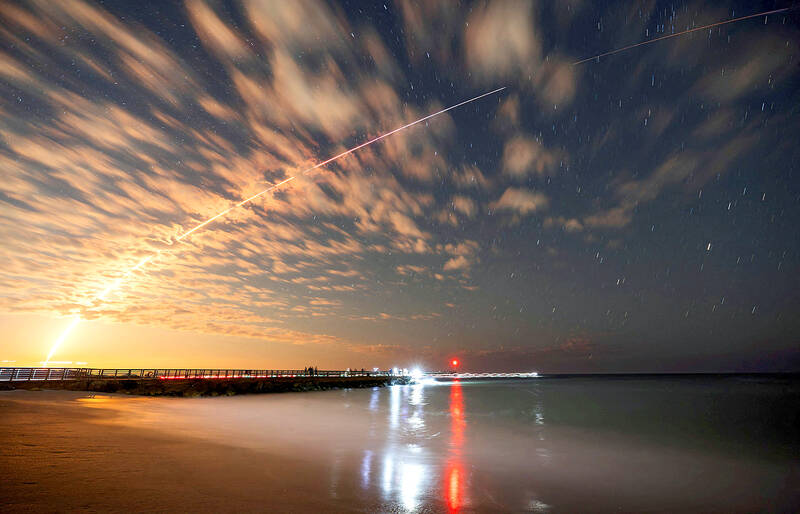Climate change is already causing all sorts of problems on Earth, but soon it will be making a mess in orbit around the planet too, a new study finds.
MIT researchers calculated that as global warming caused by burning of coal, oil, gas continues it may reduce the available space for satellites in low Earth orbit by anywhere from one-third to 82 percent by the end of the century, depending on how much carbon pollution is spewed. That’s because space will become more littered with debris as climate change lessens nature’s way of cleaning it up.
Part of the greenhouse effect that warms the air near Earth’s surface also cools the upper parts of the atmosphere where space starts and satellites zip around in low orbit, That cooling also makes the upper atmosphere less dense, which reduces the drag on the millions of pieces of human-made debris and satellites.

Photo: AP
That drag pulls space junk down to Earth, burning up on the way. But a cooler and less dense upper atmosphere means less space cleaning itself. That means that space gets more crowded, according to a study in Monday’s journal Nature Sustainability.
“We rely on the atmosphere to clean up our debris. There’s no other way to remove debris,” said study lead author Will Parker, an astrodynamics researcher at MIT. “It’s trash. It’s garbage. And there are millions of pieces of it.”
Circling Earth are millions of pieces of debris about 3 millimeters and larger — the width of two stacked pennies — and those collide with the energy of a bullet. There are tens of thousands of plum-sized pieces of space junk that hit with the power of a crashing bus, according to The Aerospace Corporation, which monitors orbital debris. That junk includes results of old space crashes and parts of rockets with most of it too small to be tracked.

Photo: Reuters
There are 11,905 satellites circling Earth — 7,356 in low orbit — according to the tracking website Orbiting Now. Satellites are critical for communications, navigation, weather forecasting and monitoring environmental and national security issues.
“There used to be this mantra that space is big. And so we can we can sort of not necessarily be good stewards of the environment because the environment is basically unlimited,” Parker said.
But a 2009 crash of two satellites created thousands of pieces of space junk. Also NASA measurements are showing measurable the reduction of drag, so scientists now realize that “the climate change component is really important,” Parker said.
The density at 400 kilometers above Earth is decreasing by about 2 percent a decade and is likely to get intensify as society pumps more greenhouse gas into the atmosphere, said Ingrid Cnossen, a space weather scientist at the British Antarctic Survey who was not part of the research.
Cnossen said in an e-mail that the new study makes “perfect sense” and is why scientists have to be aware of climate change’s orbital effects “so that appropriate measures can be taken to ensure its long-term sustainability.”

April 7 to April 13 After spending over two years with the Republic of China (ROC) Army, A-Mei (阿美) boarded a ship in April 1947 bound for Taiwan. But instead of walking on board with his comrades, his roughly 5-tonne body was lifted using a cargo net. He wasn’t the only elephant; A-Lan (阿蘭) and A-Pei (阿沛) were also on board. The trio had been through hell since they’d been captured by the Japanese Army in Myanmar to transport supplies during World War II. The pachyderms were seized by the ROC New 1st Army’s 30th Division in January 1945, serving

The People’s Republic of China (PRC) last week offered us a glimpse of the violence it plans against Taiwan, with two days of blockade drills conducted around the nation and live-fire exercises not far away in the East China Sea. The PRC said it had practiced hitting “simulated targets of key ports and energy facilities.” Taiwan confirmed on Thursday that PRC Coast Guard ships were directed by the its Eastern Theater Command, meaning that they are assumed to be military assets in a confrontation. Because of this, the number of assets available to the PRC navy is far, far bigger

The 1990s were a turbulent time for the Chinese Nationalist Party’s (KMT) patronage factions. For a look at how they formed, check out the March 2 “Deep Dives.” In the boom years of the 1980s and 1990s the factions amassed fortunes from corruption, access to the levers of local government and prime access to property. They also moved into industries like construction and the gravel business, devastating river ecosystems while the governments they controlled looked the other way. By this period, the factions had largely carved out geographical feifdoms in the local jurisdictions the national KMT restrained them to. For example,

Shunxian Temple (順賢宮) is luxurious. Massive, exquisitely ornamented, in pristine condition and yet varnished by the passing of time. General manager Huang Wen-jeng (黃文正) points to a ceiling in a little anteroom: a splendid painting of a tiger stares at us from above. Wherever you walk, his eyes seem riveted on you. “When you pray or when you tribute money, he is still there, looking at you,” he says. But the tiger isn’t threatening — indeed, it’s there to protect locals. Not that they may need it because Neimen District (內門) in Kaohsiung has a martial tradition dating back centuries. On